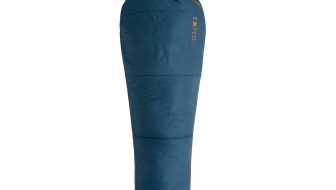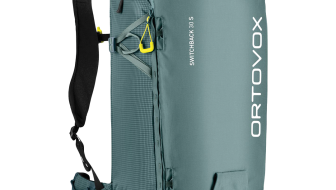
Help from above, thanks to Teton County Search and Rescue . [Photo] Brittany Mumma
Physical injuries—otherwise known as trauma—get a lot of attention in backcountry first aid. But there’s a whole other realm of dangerous and deadly emergencies that skiers and riders should be aware of and prepared to manage. We spoke with Nicholas Kanaan, an emergency physician based in Salt Lake City, Utah with a background in wilderness medicine, to learn more.
Defining “medical”
Unlike trauma-related emergencies—think cuts, bruises and broken bones that are caused by an external mechanism or action—medical emergencies deal with what’s within. Heart attacks, seizure disorders, diabetic emergencies, anaphylaxis and other acute injuries and underlying illnesses constitute medical issues that can pose risk to life and long-term health.
“Part of the reason that medical issues are harder to assess is there’s an incredibly diverse possibility of medical illnesses,” Kanaan says. “If somebody has abdominal pain, there could be over 100 different reasons why.” That can make identifying and managing such issues more difficult than with trauma. But if an individual is experiencing pain, discomfort or altered mental status that’s not associated with a collision or fall, consider the following.
Managing An Issue
“Step back and try to calm down and systematically think about what may be causing the issue,” Kanaan says. Understanding a medical issue requires detective work—ask about the individual’s medical history, their allergies, what medications they take, if they’ve experienced this problem before (and how they dealt with it).
Even if asking these questions doesn’t lead to a concrete answer or cause, it will help inform what steps come next—whether that be immediate evacuation, stabilizing a patient or calling for help. “When you call search and rescue, when you call for help, you’ll be able to very clearly let them know what the problem is,” Kanaan says, “and they’ll be better equipped to help you.”
Plan & Prepare
Before leaving the trailhead, openly and willingly share your pertinent medical history and allergies with your partners, especially on overnight trips. This kind of dialog will allow partners to look out for one another and, should an issue arise, it could be less of a shock. “Knowing that information is going to save you a whole lot of potential detective work if a medical condition arises,” Kanaan says. “I think that discussing it in advance is going to help more than taking a physician-grade medical kit with you.”
Dial Your Kit
Think back to the first-aid kit packed with tools to manage bleeding, breaks and sprains. Even though medical issues can be difficult to identify or treat in the field, Kanaan suggests adding two low-cost, high-yield medications to your kit—Benadryl, to deal with allergic reactions that can quickly turn life threatening in remote environments, and aspirin. “If someone is having chest pain,” Kanaan says, “Aspirin is still one of the best medications to reduce the complications of a heart attack.”
Get Educated
Being aware of medical issues is just the first step dealing with them. A Wilderness First Aid, First Responder or EMT course will provide the next steps in understanding and managing backcountry medical emergencies. “Having basic first-aid training goes hand in hand with going into the backcountry,” Kanaan says. “I think it’s just as important as getting an avalanche certification.”
Seek out courses in wilderness medicine and first aid through providers like the National Outdoor Leadership School, the American Red Cross and SOLO.










The language around Benadryl is unclear and possibly confusing !
……”to deal with allergic reactions ” “that can quickly turn life threatening “. Associating Benadryl with the treatment of anaphylaxis and not making it clear that it is a second line treatment is not a good idea. Fatal anaphylaxis typically takes less than 30 minutes , whereas Benadryl takes 45 to work. Regards P
There are fast-acting diphenhydramine products. I keep a few packets of UrgentRx Allergy Attack in my first aid kit. Much quicker than pills.
Going back to the “Plan and Prepare” step, a person with a history of severe allergies should share that with companions. I’m allergic to bee stings, and I carry an Epi-pen in my personal medical kit. I always share that information with new partners. My understanding is that a severe anaphylactic reaction can kill in minutes, and epinephrine is the only effective treatment.
And epinephrine is short lived. One injection in anaphylactic reaction is not going to be enough.